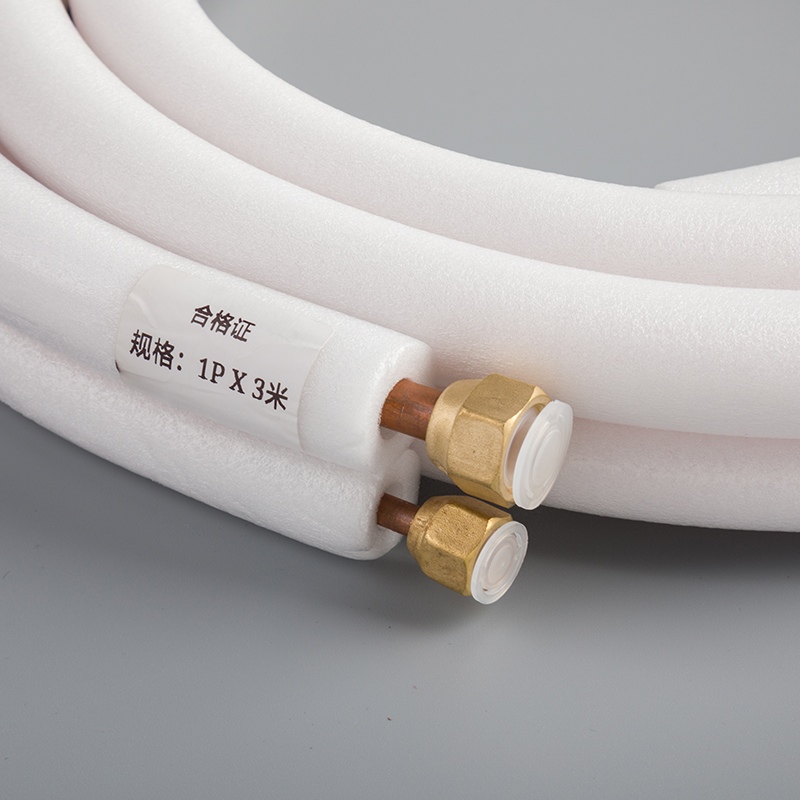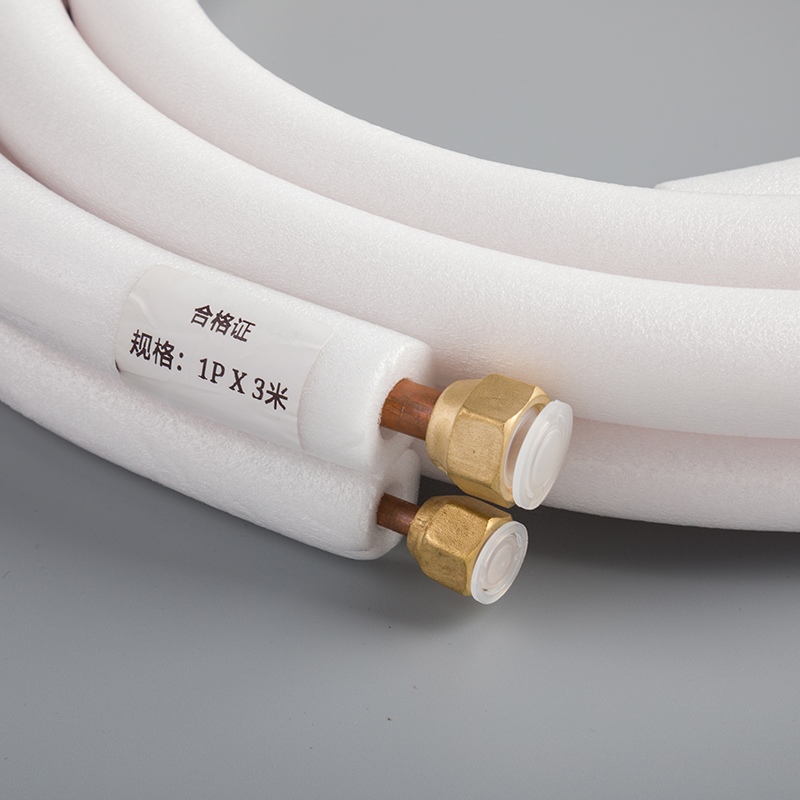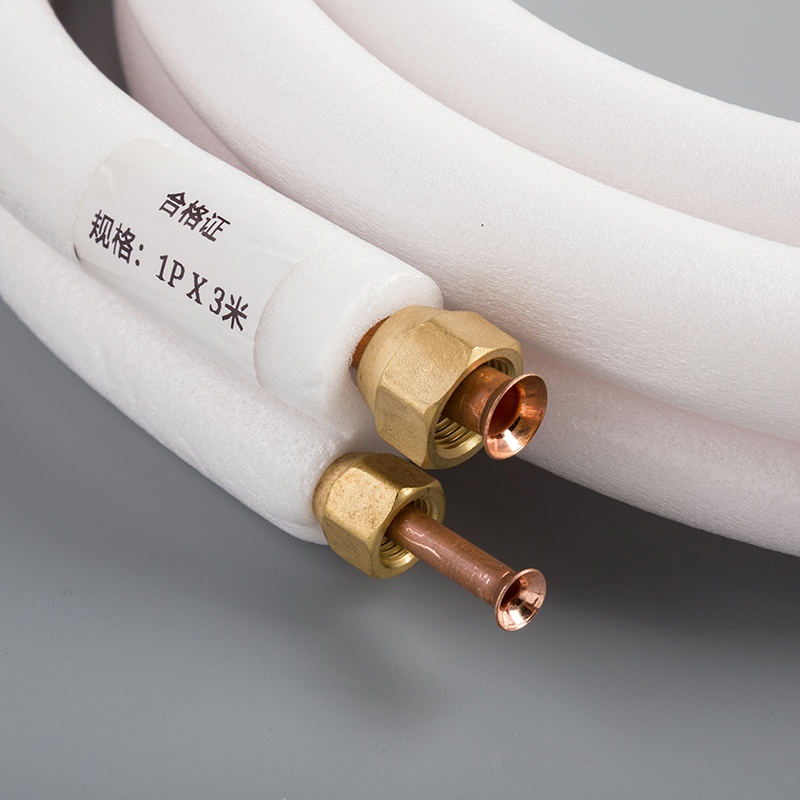Insulation Thickness Guide: Everything You Need to Know

Insulation thickness plays a critical role in maintaining energy efficiency and reducing heat loss or gain in various applications. Understanding the significance of insulation thickness is essential for optimal performance and cost savings. This guide provides an insightful overview of key points related to insulation thickness, including factors influencing it and methods to determine the right thickness. By exploring different applications and recommendations, readers can make informed decisions when selecting the appropriate insulation materials for their specific needs.
Understanding Insulation Thickness

When considering insulation thickness, it is crucial to comprehend its definition and significance. Insulation thickness refers to the dimension of the insulating material surrounding a surface or object, serving as a barrier against heat transfer. This plays a vital role in maintaining energy efficiency and reducing heat loss or gain in various applications. The importance of insulation thickness cannot be overstated, as it directly impacts thermal resistance, noise reduction, and overall energy efficiency.
Factors influencing insulation thickness include material conductivity, surface coefficient, and pipe size/application. Material conductivity determines how well the insulation material can resist heat flow, with lower conductivity indicating better insulation properties. The surface coefficient relates to the efficiency of heat transfer between the surface being insulated and its surroundings. Additionally, pipe size and application play a significant role in determining the appropriate insulation thickness required for optimal performance.
Thicker insulation provides better thermal resistance, reduces noise levels, and contributes to enhanced energy efficiency and cost savings. Studies have shown that finding the right balance in insulation thickness is crucial for maintaining optimal thermal comfort throughout different seasons. For instance, thicker insulation helps keep homes warmer in winter and cooler in summer, leading to increased energy savings over time.
In practical terms, selecting the correct insulation thickness involves considering various factors such as environmental conditions, desired energy efficiency levels, and specific application requirements. By understanding these influences on insulation thickness, individuals can make informed decisions when choosing the most suitable insulation materials for their needs.
Determining the Right Thickness
Methods to Calculate Insulation Thickness
When determining the appropriate insulation thickness for a specific application, it is crucial to consider various methods that can help calculate the optimal depth of insulation. By utilizing these methods effectively, individuals can ensure maximum energy efficiency and cost savings.
Conductivity Ratio Method
The Conductivity Ratio Method is a reliable approach used to determine the required insulation thickness based on the conductivity of the insulating material and its surface coefficient. This method involves calculating the ratio between the material's conductivity and the surface coefficient to establish the ideal thickness that provides optimal thermal resistance. By applying this method accurately, individuals can select insulation materials that offer superior heat retention properties.
Industry Standards and Guidelines
Adhering to industry standards and guidelines is essential when determining the right insulation thickness for different applications. These standards are established by experts in the field to ensure that insulation requirements meet specific criteria for performance and safety. By following industry guidelines, individuals can make informed decisions regarding insulation thickness, taking into account factors such as environmental conditions, heat transfer rates, and energy efficiency goals.
Insulation Thickness for Different Applications
The insulation thickness required varies depending on the application, with specific considerations for residential plumbing, industrial oil and maritime applications, as well as hot and cold water pipes. Understanding these variations is crucial for selecting the most suitable insulation materials tailored to each scenario.
Residential Plumbing
For residential plumbing systems, it is recommended to choose an insulation thickness that provides sufficient protection against heat loss while maintaining water temperature. Optimal insulation thickness ensures energy efficiency within homes by reducing heat transfer in hot water pipes and preventing freezing in cold water pipes during winter months.
Industrial Oil and Maritime Applications
In industrial settings such as oil refineries or maritime environments, where large bore outside steam pipes are prevalent, a thicker insulation wall of up to 50mm may be necessary. This increased insulation thickness helps maintain high-temperature fluids within pipelines while minimizing heat loss and ensuring operational efficiency.
Hot and Cold Water Pipes
When insulating hot water pipes exposed to elevated temperatures or cold water pipes susceptible to freezing conditions, selecting the appropriate insulation material is crucial. Materials like fiberglass or mineral wool are ideal for hot pipes due to their high-temperature resistance properties, while foam and rubber are suitable choices for cold water pipes.
By understanding these diverse applications and recommendations for determining the right insulation thickness, individuals can make informed decisions when selecting insulation materials tailored to their specific needs.
Applications and Recommendations

Choosing the Right Material
When selecting the optimal insulation material for a specific application, it is essential to consider various factors such as Fiberglass and Mineral Wool or Foam and Rubber. Each material offers unique properties that cater to different insulation needs, ensuring efficient thermal resistance and energy savings.
Fiberglass and Mineral Wool
Fiberglass insulation, made of tiny glass fibers, provides effective thermal insulation by trapping air within its fibers. This process slows down heat transfer, enhancing energy efficiency in buildings. Additionally, fiberglass insulation is fire-resistant, offers acoustic insulation benefits, and aids in reducing overall energy costs.
On the other hand, Mineral Wool, another popular choice for insulation, offers similar benefits to fiberglass. It is known for its excellent fire resistance properties, making it a safe option for various applications. Mineral wool also provides soundproofing capabilities and contributes to energy savings by reducing heat loss.
Foam and Rubber
Foam insulation stands out due to its seamless application method that allows it to expand and fill every corner effectively. This type of insulation creates a robust air barrier, resulting in reduced energy bills and improved thermal efficiency. With a high R-value per inch, foam insulation is ideal for spaces with limited room for traditional insulating materials.
Alternatively, Rubber pipe insulation surpasses foam in terms of thermal efficiency, moisture resistance, and durability. This cost-effective option is suitable for insulating pipes across different applications where maintaining consistent temperatures is crucial. Rubber pipe insulation ensures energy savings while providing long-lasting protection against external elements.
Practical Tips and Best Practices
When applying insulation materials to pipes or surfaces, certain practices can enhance the effectiveness of the installation process while maximizing energy efficiency.
Matching Pipe Size
Selecting an insulation thickness that matches the pipe size accurately is vital for achieving optimal results. For pipes exceeding 2 inches CTS (copper tube size), ordering the exact size matching the outside diameter of the pipe ensures a snug fit without gaps or overlaps. This precise fitting minimizes heat loss or gain along the pipeline while maintaining consistent temperatures within the system.
Ensuring Adequate Protection
Ensuring proper installation techniques are employed when applying insulation materials guarantees long-term protection against heat transfer issues. Properly securing the insulation around pipes or surfaces prevents air infiltration or moisture buildup that could compromise thermal performance over time. Regular inspections and maintenance further ensure that the installed insulation remains intact and functional throughout its lifespan.
By following these practical tips when choosing the right material for your specific needs and implementing best practices during installation, individuals can achieve optimal thermal resistance levels while maximizing energy efficiency in various applications.
Proper insulation thickness is crucial for optimal energy efficiency and comfort.
Thicker insulation provides better thermal resistance, helping to keep homes warmer in the winter and cooler in the summer.
Adequate ventilation and professional guidance are essential in preventing moisture-related problems while ensuring optimal comfort and efficiency.
Balancing insulation thickness with energy efficiency is key to achieving optimal thermal comfort in your home.
By taking factors like insulation material types and potential drawbacks into consideration, you can ensure the best thickness of insulation for your needs.
See Also
The Ultimate Guide for Choosing 1/4 3/8 Copper Pipe Coils
Discover the Advantages of 1/4 3/8 Twin Copper Pipe Coils


